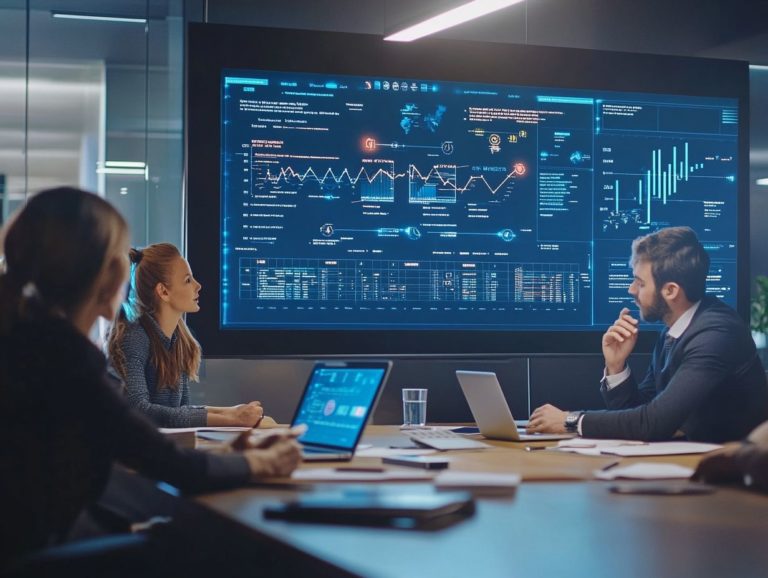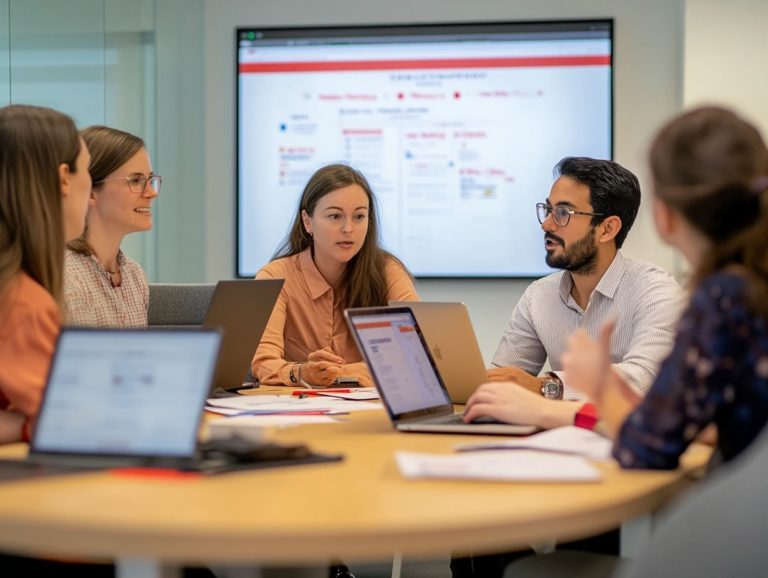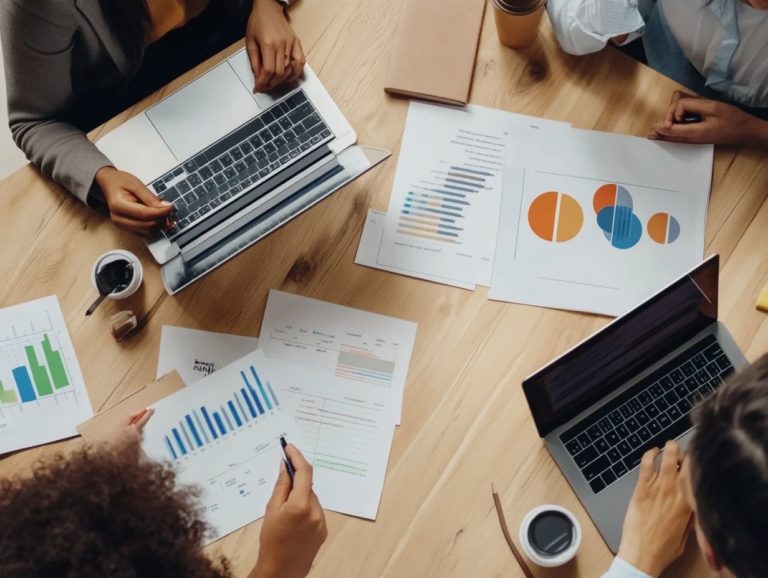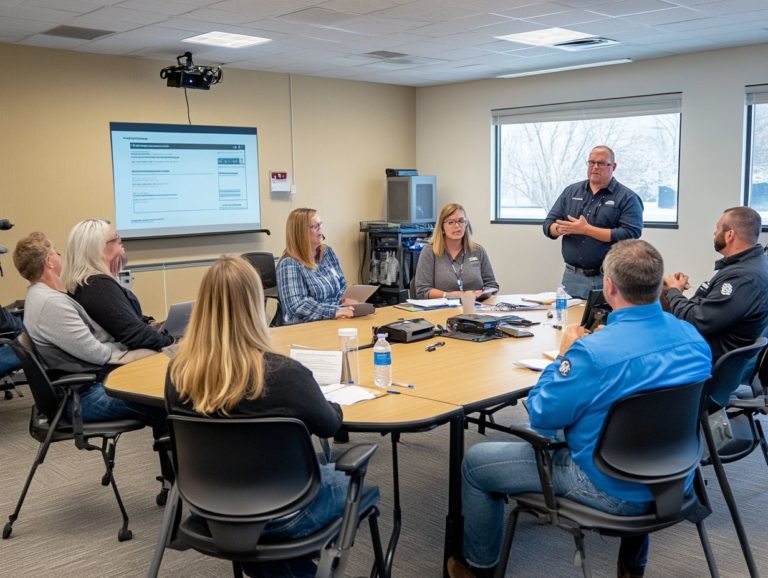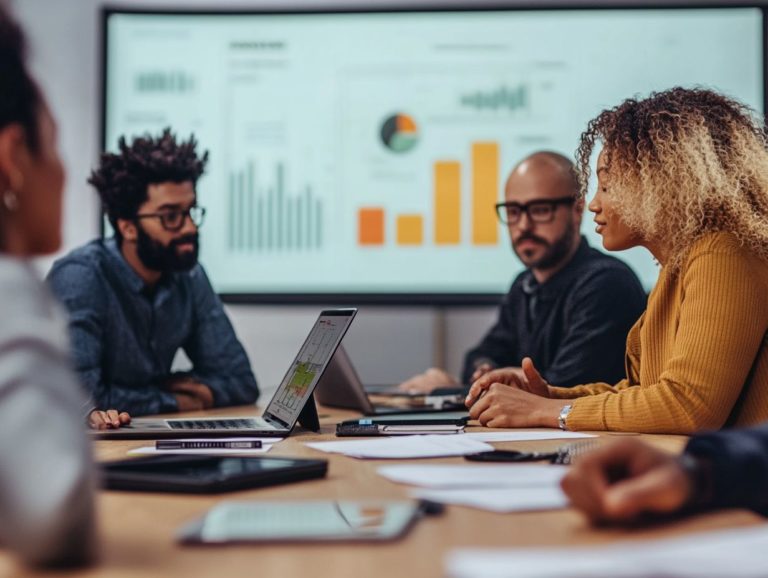how to gather evidence during an incident
In any incident investigation, you cannot overstate the importance of gathering evidence. Evidence becomes the backbone for understanding what occurred and determining accountability.
This article delves into various types of evidence both physical and testimonial. We’ll highlight how to effectively collect and preserve it. From maintaining the integrity of the scene to conducting insightful interviews, we guide you through the essential processes involved in organizing evidence.
You ll discover how to analyze this information to uncover root causes and contributing factors of incidents. This ensures you achieve a comprehensive understanding. Discover the crucial steps now to master evidence gathering!
Contents
- Key Takeaways:
- Understanding the Importance of Gathering Evidence
- Types of Evidence to Gather
- Testimonial Evidence
- Collecting Physical Evidence
- Preserving the Scene and Chain of Custody
- Gathering Testimonial Evidence
- Interviewing Witnesses and Involved Parties
- Documenting and Organizing Evidence
- Using Evidence in Incident Analysis
- Frequently Asked Questions
- 1. What counts as evidence during an incident?
- 2. How should I handle and preserve evidence during an incident?
- 3. What are some ways to gather digital evidence during an incident?
- 4. How do I obtain witness statements as evidence during an incident?
- 5. Can I use social media posts as evidence during an incident?
- 6. What should I do with the gathered evidence after an incident?
Key Takeaways:
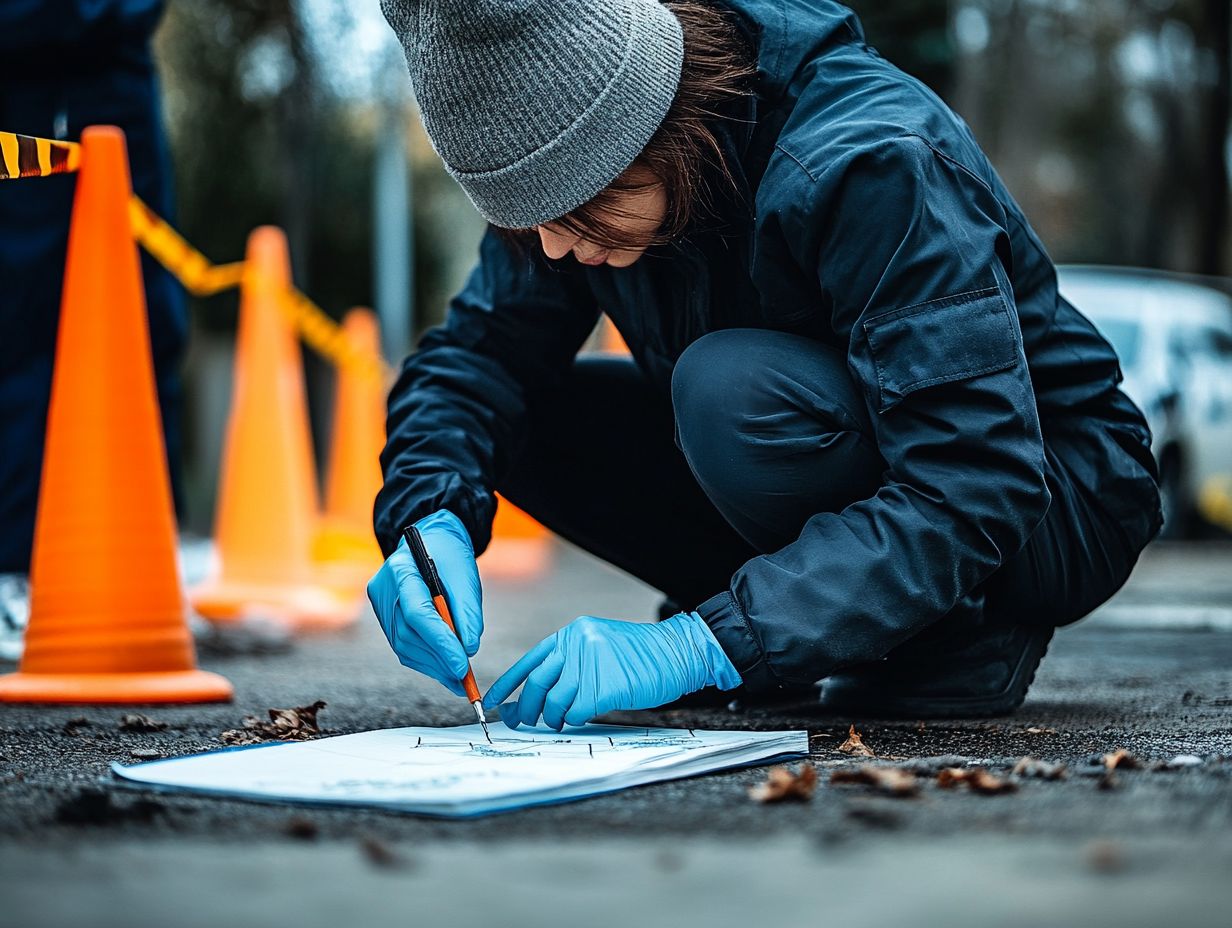
Collecting evidence properly is key to figuring out what caused the incident. Physical and testimonial evidence should be gathered and preserved to ensure accuracy and reliability. Additionally, knowing how to prepare for an incident investigation can aid in documenting and organizing evidence effectively, which is important for the successful analysis and resolution of incidents.
Understanding the Importance of Gathering Evidence
Gathering evidence is crucial for effective incident response. It maintains the integrity and reliability of the investigation after a security incident.
By focusing on proper evidence collection and preservation, you also gain insights into the root cause of the event. This ensures compliance with legal proceedings and safety rules set by the Occupational Safety and Health Administration, enhancing workplace safety.
From digital artifacts to eyewitness testimonies, every piece of evidence enriches your analysis. This can be pivotal in shaping corrective actions that elevate your risk management strategies in the future.
Why Evidence is Crucial in Incident Investigation
Evidence is paramount in incident investigations. It serves as the bedrock for understanding what unfolded during a security breach.
A holistic approach to evidence collection encompasses various types, including physical artifacts, digital footprints, and eyewitness accounts. Each component plays a crucial role in crafting a clear timeline and revealing the motivations behind the breach.
For example, while digital logs may expose unauthorized access, eyewitness testimony can provide essential context regarding suspicious activities, enriching the investigation.
Meticulous documentation of incidents is critical. It ensures that all relevant details are captured for future reference, proving invaluable for both immediate remediation and long-term prevention strategies.
Types of Evidence to Gather
Collecting the right types of evidence is essential. Here s what you need to focus on:
- Physical evidence
- Testimonial evidence
- Digital evidence
Each of these categories plays a vital role in the overall analysis and investigation process, ensuring nothing slips through the cracks.
Physical Evidence
Physical evidence encompasses tangible items you can gather from the scene of an incident think objects, documents, and visual cues. These significantly enhance your understanding of the circumstances surrounding a security issue.
The importance of preserving this type of evidence cannot be overstated. It plays a pivotal role in both investigative and legal processes. To maintain the integrity of physical evidence, employing meticulous collection procedures, proper handling, and secure storage is paramount.
For example, when you gather visual evidence, utilizing forensic photography can be invaluable. This technique captures the scene in detail from multiple angles, creating an accurate record.
It s essential to document this evidence thoroughly. This typically includes maintaining a chain of custody and crafting detailed logs that outline how, when, and where the evidence was collected. This meticulous documentation serves as a crucial reference during investigations, ensuring that the evidence remains reliable and stands up in court.
Start gathering evidence today to ensure your incident investigations are thorough and effective!
Testimonial Evidence
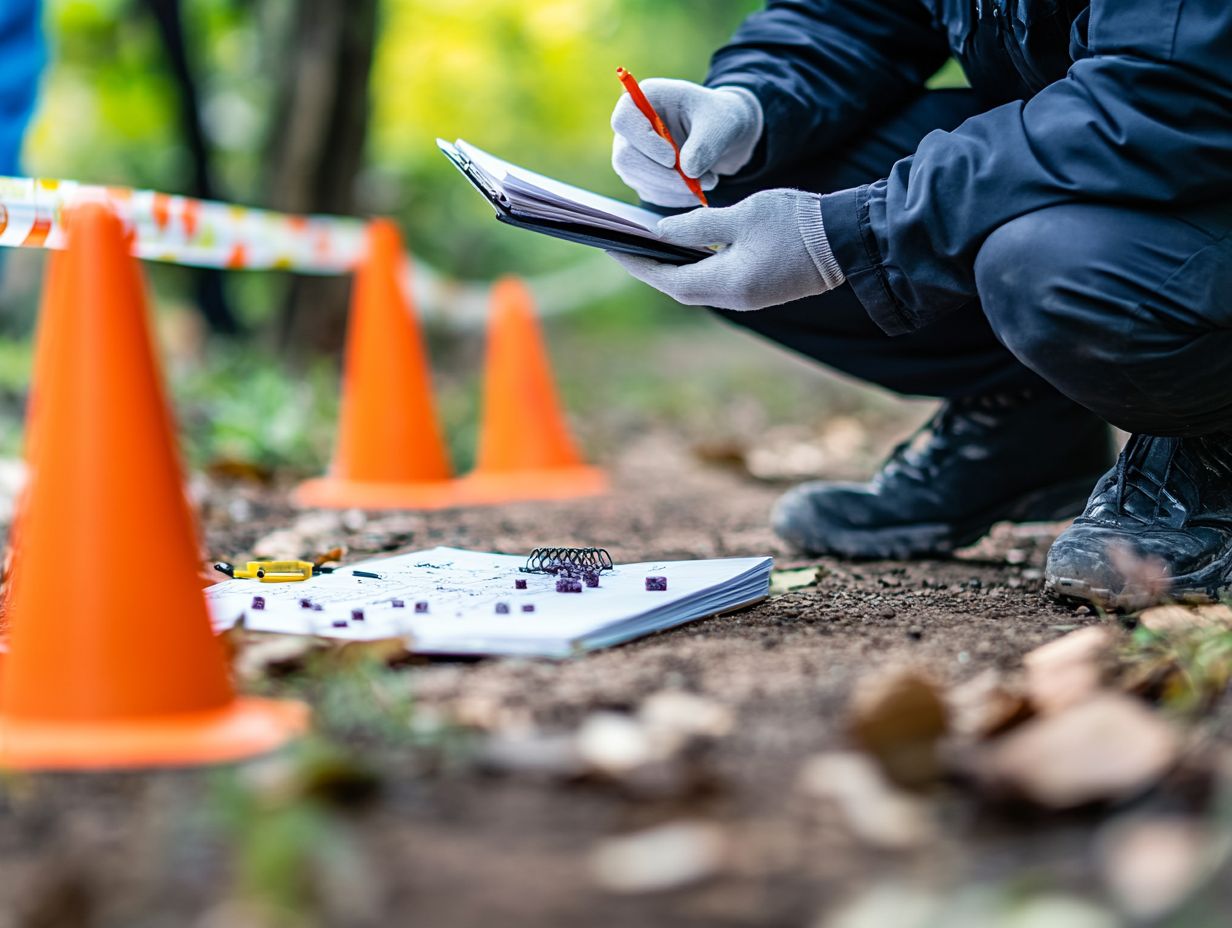
Testimonial evidence includes eyewitness accounts and statements from individuals who observed the incident. This information provides essential context for the investigation.
To ensure this evidence is reliable and comprehensive, adopt a structured methodology for interviewing. Create a safe environment where witnesses feel at ease to share their memories.
Careful documentation of these statements is crucial. Detailed notes and audio recordings can capture nuances that might otherwise be missed.
When testimonials are combined with physical and digital evidence, they become powerful tools for substantiating findings. This corroboration boosts credibility and offers a more complete understanding of the incident, facilitating a clear resolution.
Collecting Physical Evidence
Collecting physical evidence is a careful process. Every detail matters to keep evidence safe and the investigation on track. This ensures the integrity of the evidence and maintains a clear chain of custody from the incident scene to your investigative team.
This process is crucial for legal admissibility and the overall effectiveness of the incident investigation. Proper evidence handling protocols are essential to safeguard the investigation’s outcome.
Preserving the Scene and Chain of Custody
Preserving the incident scene and maintaining a proper chain of custody are vital components of evidence collection. They protect the integrity of both physical evidence and digital artifacts. It is crucial for everyone involved especially evidence handlers to follow established protocols precisely.
Their responsibilities extend beyond collecting and preserving items; they must also document each step meticulously. This includes noting the condition of evidence upon discovery, the methods used for collection, and the circumstances surrounding the incident.
Thorough documentation ensures accountability, facilitates future analysis, and strengthens the legal standing of the evidence.
Effective communication among team members about what has been discovered and how it will be managed is essential. This maintains the security of the incident scene while keeping the evidentiary chain intact.
Gathering Testimonial Evidence
Gathering testimonial evidence is a critical step in any incident investigation. Conduct structured interviews with witnesses to capture their observations and insights. This qualitative data complements physical evidence and enriches your overall understanding of the incident.
Effective interviewing techniques are key. Establishing rapport with witnesses significantly improves the quality of the information they share. Comfort is essential; when individuals feel at ease, they are more likely to provide detailed and honest accounts of their experiences.
Using open-ended questions encourages them to elaborate, leading to richer narratives. It is vital to document these testimonials accurately, as precise recounting can serve as critical evidence during investigations and shape subsequent decisions.
Interviewing Witnesses and Involved Parties
Interviewing witnesses and those involved is essential for collecting testimonial evidence that sheds light on events leading to the incident. This offers insights that physical evidence alone may not reveal.
To conduct effective interviews, prepare thoughtful questions in advance. This allows for a focused and productive dialogue.
Pay close attention to non-verbal cues, such as body language and facial expressions. These can reveal underlying emotions, enriching the context of the witness s statements.
Recording these interviews whether through audio or video ensures an accurate representation of what was said. This becomes invaluable when compiling evidence later.
This careful approach bolsters the credibility of the information gathered and assists in crafting a comprehensive narrative that supports the investigative process.
Take Action: Apply these techniques in your next investigation for enhanced results!
Documenting and Organizing Evidence
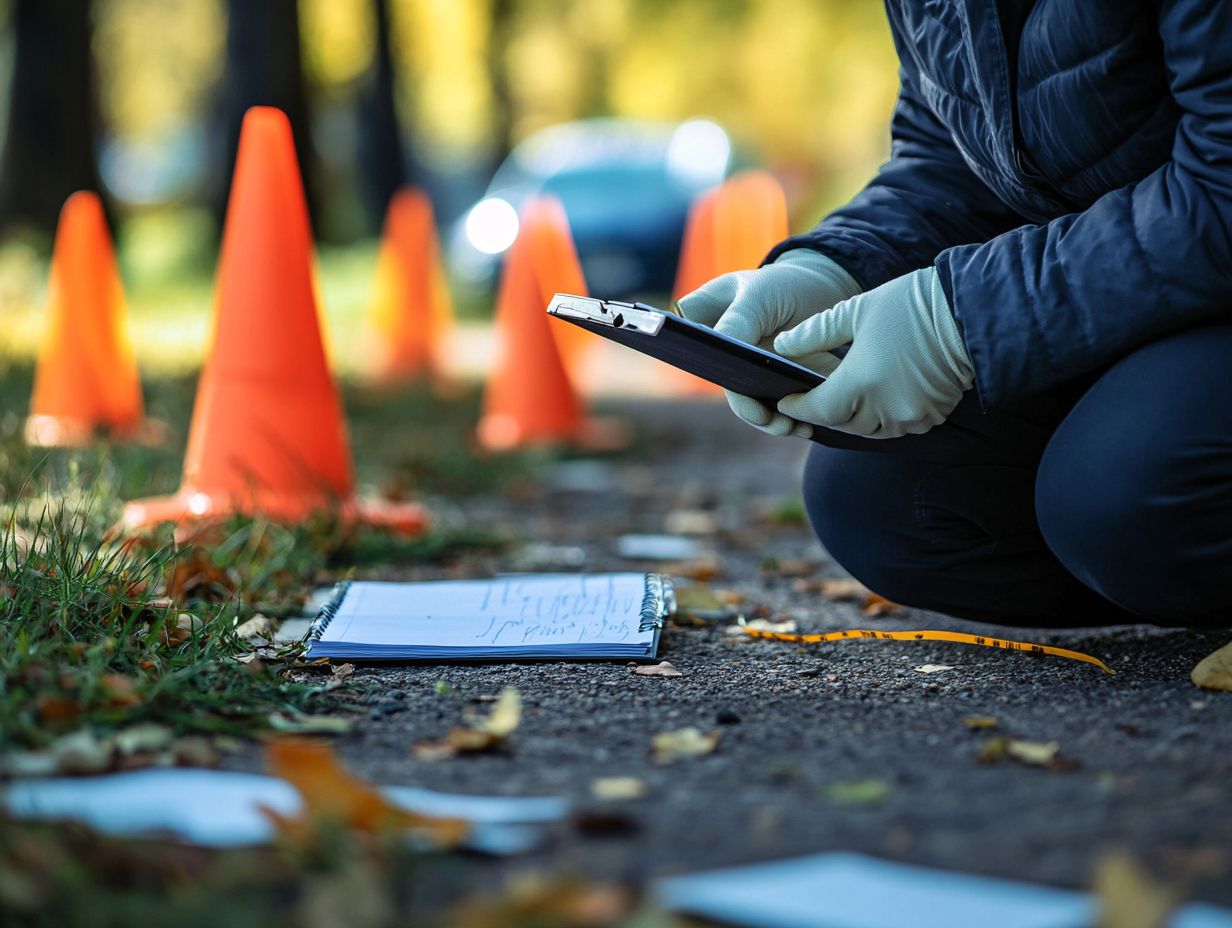
Documenting and organizing evidence is crucial for incident investigations. Every piece of data must be recorded and easily accessible for analysis.
This careful approach improves your investigation and helps you analyze incidents more effectively.
Effective Methods for Recording and Storing Evidence
Recording and storing evidence properly is essential for maintaining the integrity of your findings. Ensure that all collected data is readily accessible during an investigation.
Incorporate best practices for evidence documentation. Don’t overlook the importance of digital storage solutions and physical evidence management techniques.
Using secure cloud-based systems protects your data from loss and enhances collaboration among your investigative teams.
For physical evidence, implement a reliable tracking system to ensure careful monitoring throughout the investigation.
Adopt consistent formats for recording information. This enhances the reliability of your analysis and supports clear communication among team members, leading to more effective resolutions.
Using Evidence in Incident Analysis
Using evidence in incident analysis helps uncover the root causes of security breaches and identify contributing factors.
By systematically interpreting physical, digital, and testimonial evidence, you can create corrective actions that enhance your risk management strategies and strengthen your cybersecurity posture.
Interpreting and Analyzing Evidence to Determine Causes
Interpreting and analyzing evidence is vital to identifying the root cause of an incident. Experts often use statistical analysis and pattern recognition to scrutinize data.
By examining trends and anomalies, you can identify recurring vulnerabilities and potential threat vectors. These insights help pinpoint weaknesses and shape tailored corrective actions.
For instance, detailed examinations inform adjustments in security protocols, enhancing overall measures and creating a more robust defense against future breaches.
Frequently Asked Questions
1. What counts as evidence during an incident?
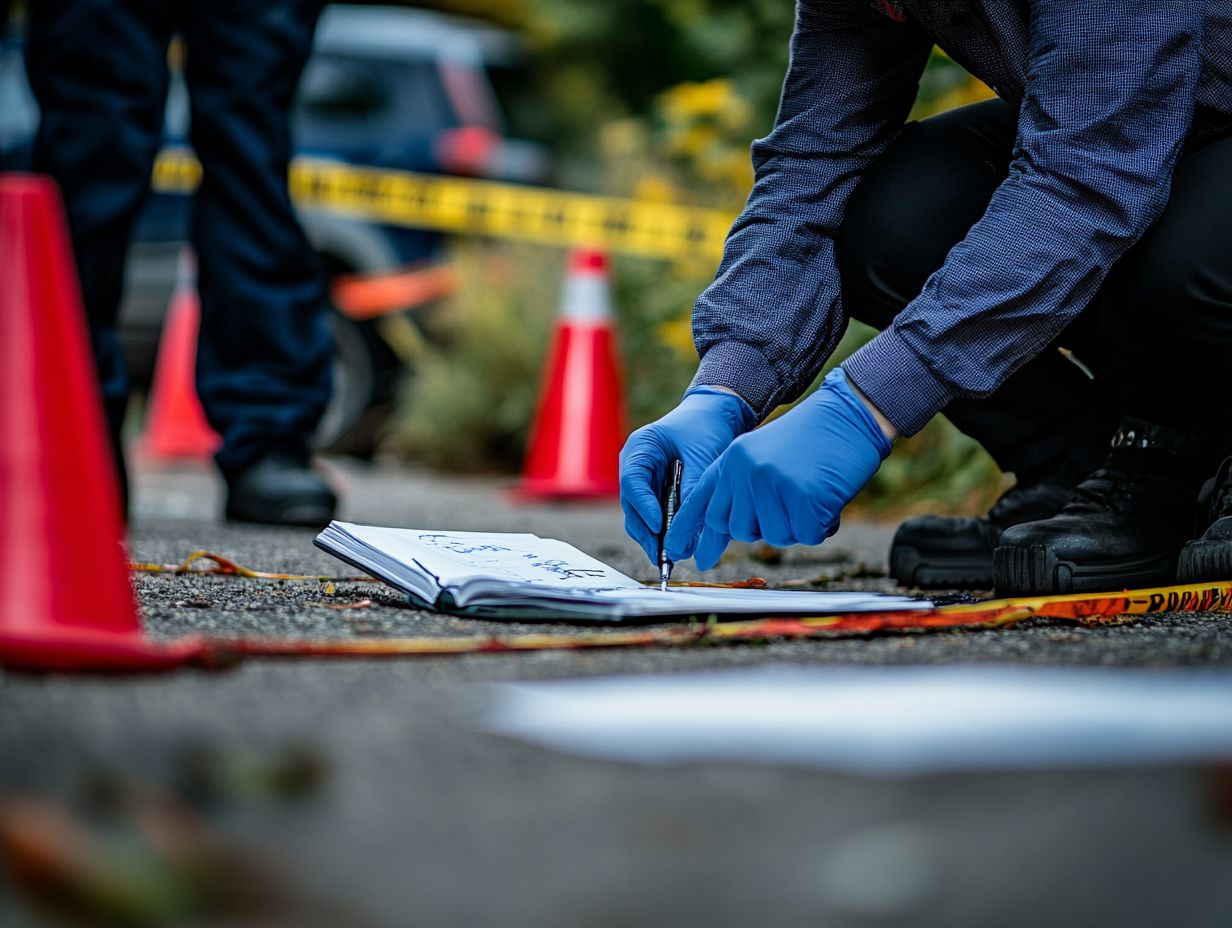
Evidence can include physical objects, photographs, videos, documents, witness statements, and any information that helps establish what happened.
2. How should I handle and preserve evidence during an incident?
Handle and preserve evidence carefully to avoid damage or contamination. Follow these steps:
- Wear gloves and use clean tools for collecting physical evidence.
- Take clear photos and videos.
- Keep all items in a safe and secure location.
3. What are some ways to gather digital evidence during an incident?
Gather digital evidence by:
- Taking screenshots.
- Collecting relevant emails or text messages.
- Recording online activity.
Document the source and date/time of the digital evidence for accuracy.
4. How do I obtain witness statements as evidence during an incident?
Gather witness statements as soon as possible to ensure accuracy. To do this:
- Speak with witnesses immediately to avoid memory loss.
- Ask open-ended questions.
- Record statements in writing or through audio/video recording.
Social media posts can be used as evidence if relevant and authenticated. Ensure to:
- Take screenshots.
- Record the source and date/time of the post.
6. What should I do with the gathered evidence after an incident?
All evidence must be clearly labeled, recorded, and kept safe.
Follow all legal and company policies for handling evidence. Avoid changing or messing with the evidence in any way.
Your careful handling can make a big difference in resolving an incident!

